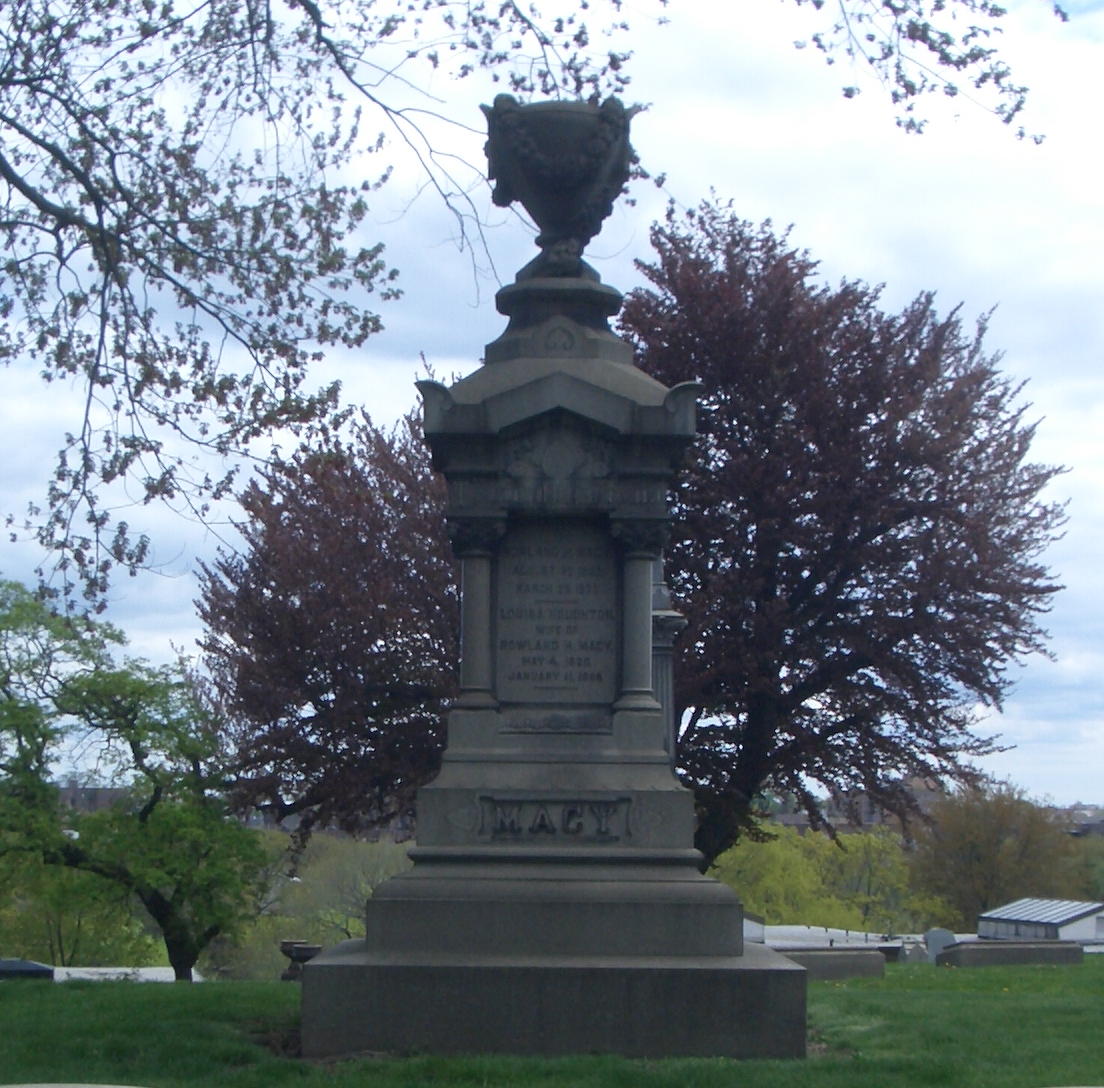R.H.Macy "Way to Shop!"
Macy died in Paris in 1877, just a few weeks after traveling to Europe with his family for some much-needed rest on the advice of his doctors. According to a New York Times article that announced his death, "Laborious work during his best years brought him, at the age of 56, to a sick bed, suffering from Bright's disease of the kidneys, of which he died." However, his funeral was not held until June 29th. After a religious service in New York City's Church of the Holy Trinity, with family and friends and 300 of Macy's employees, Macy's body was taken by special train to the Bronx for burial in Woodlawn Cemetery. In his will, Macy left the bulk of his estate to his wife and daughter, excluding his son, Rowland Jr., save for an annual annuity of $1,000. He stated in his will, "…I cannot trust him with the care or management of my property…though he is now 29 years of age, he has been entirely supported and maintained by me." In 1893, R. H. Macy & Co. was acquired by the Straus family, who were the owners of Abraham & Straus. The Straus family is also buried in Woodlawn Cemetery.
In 1902, Macy's flagship store relocated to Herald Square at 34th Street and Broadway, which still stands today. An addition to the property in 1924 made Macy's Herald Square the largest store in the world. That year also marked the first Macy's Thanksgiving Day Parade, which has since become an annual event. Approximately 10,000 people attended the parade's first iteration.
In an interesting turn of events, retailers in 1939 successfully lobbied President Franklin Roosevelt to change the date of the Thanksgiving holiday. Their aim was to extend the Christmas shopping season by moving Thanksgiving from the last Thursday of November to the fourth Thursday. Despite opposition from other businesses, Congress passed a bill that President Roosevelt signed into law in 1941, permanently changing the date of Thanksgiving.

.jpeg)


Comments
Post a Comment